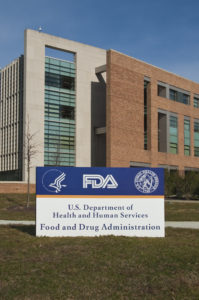
 October 29, 2018 — Although the U.S. Food and Drug Administration (FDA) extended the dates for food and beverage companies to comply with the updated Nutrition Facts and Supplement Facts labels, many companies have already begun to transition to the new label format. One new change is the requirement to include a line for “added sugar” underneath the line for “total sugar,” which is intended to help consumers meet the recommendation to consume less than 10 percent of their daily calories from added sugars. Given this major labeling change and the increased global focus on reducing sugar consumption, it’s important that healthcare and nutrition professionals are equipped with the proper tools and information to educate patients and consumers on how to interpret their sugar intake using the new label, which they’ve likely already begun to see popping up on packaging.
October 29, 2018 — Although the U.S. Food and Drug Administration (FDA) extended the dates for food and beverage companies to comply with the updated Nutrition Facts and Supplement Facts labels, many companies have already begun to transition to the new label format. One new change is the requirement to include a line for “added sugar” underneath the line for “total sugar,” which is intended to help consumers meet the recommendation to consume less than 10 percent of their daily calories from added sugars. Given this major labeling change and the increased global focus on reducing sugar consumption, it’s important that healthcare and nutrition professionals are equipped with the proper tools and information to educate patients and consumers on how to interpret their sugar intake using the new label, which they’ve likely already begun to see popping up on packaging.
The FDA has made several major updates to the nutrition label, including changes to the nutrients that are required to be declared on the label. Now, “added sugars” must be included separately. According to the FDA, “added sugars” include “sugars that are either added during the processing of foods, or are packaged as such (e.g., a bag of table sugar), and also includes sugars from syrups and honey, and sugars from concentrated fruit or vegetable juices.” Though defined by the FDA, the term “added sugar” may still be confusing to patients and clients trying to interpret the amount and type of sugar in a product and how best to incorporate the product into a healthy diet. For example, consumers may question why 100% apple juice is not considered to contain added sugar, but the sugar from concentrated apple juice would be considered an added sugar. Especially in the case of patients and consumers trying to lose weight, some may wonder if low- and no-calorie sweeteners (LNCS) such as allulose are considered “added sugars,” since LNCS are used to replicate the taste and function of sugar and are technically added to other foods and beverages. Therefore, it is important to note the following points of information when reviewing the nutrition label of a product that contains allulose:
In the Ingredient List…
Allulose is also known as D-Psicose, or even D-allulose. These terms refer to the same sweetener, and are used interchangeably by the food industry. Patients and consumers should know that they may see some products that use the name allulose in the ingredient list, and others that use the name D-Psicose, but both indicate the same sweetener.
On the Nutrition Facts Panel…
Although allulose is considered Generally Recognized as Safe (GRAS) in the United States, the FDA has not clarified how allulose should be labeled on the new nutrition label. Groups like the Calorie Control Council (CCC) continue to urge the FDA to confirm that allulose does not need to be listed as either “sugar” or “added sugar” on the nutrition label, since allulose is not metabolized in the way sugar or added sugars are. Regardless of when and how the FDA determines allulose should be labeled, patients and consumers should understand how to interpret the sugar content of products that contain allulose.
How it is processed by the body…
Allulose is a carbohydrate by chemical definition, and is specifically a monosaccharide. However, while allulose is absorbed by the body, it is not metabolized. Therefore, it contributes far fewer calories (approximately 90 percent less) than sugar, and has been shown to have no impact on blood glucose. Those trying to interpret labels of products that contain allulose should know that the calories and glycemic impact of the total and added sugars declared are not a result of allulose.
The post Allulose & the New Nutrition Facts Label appeared first on Allulose.